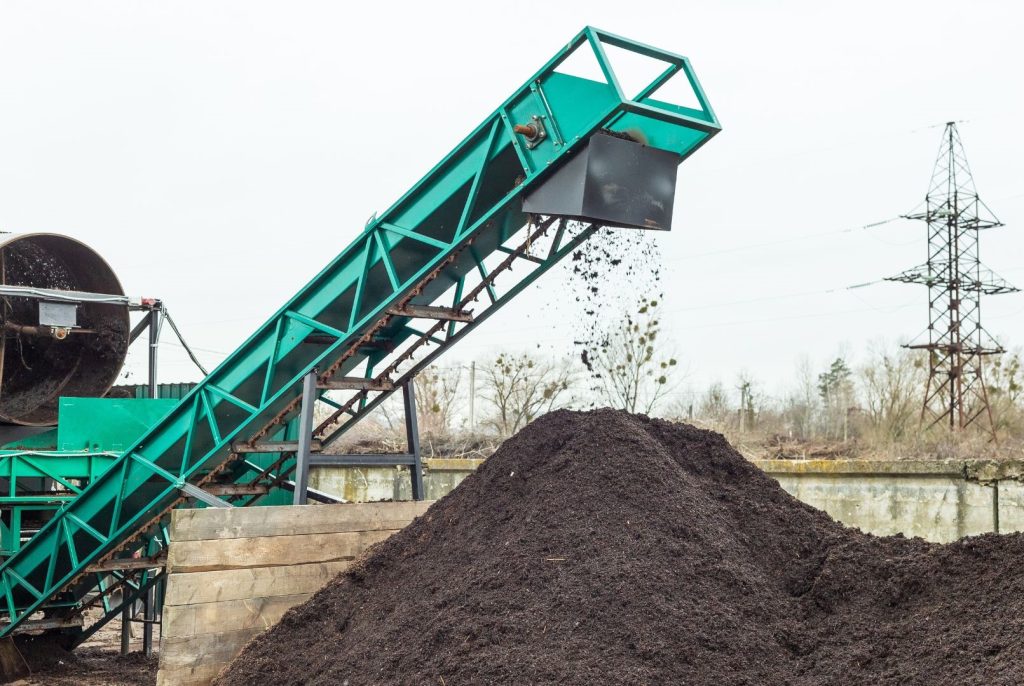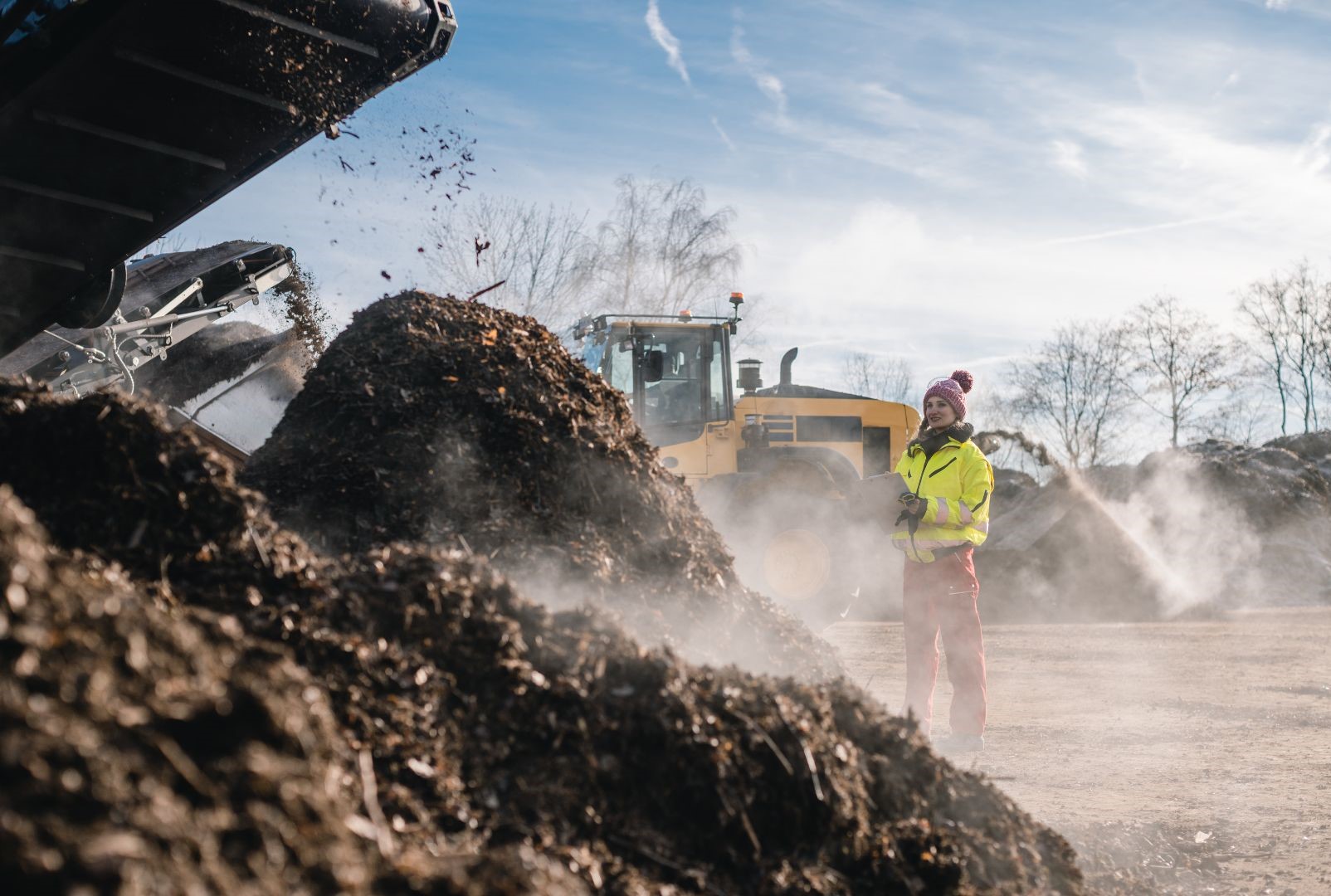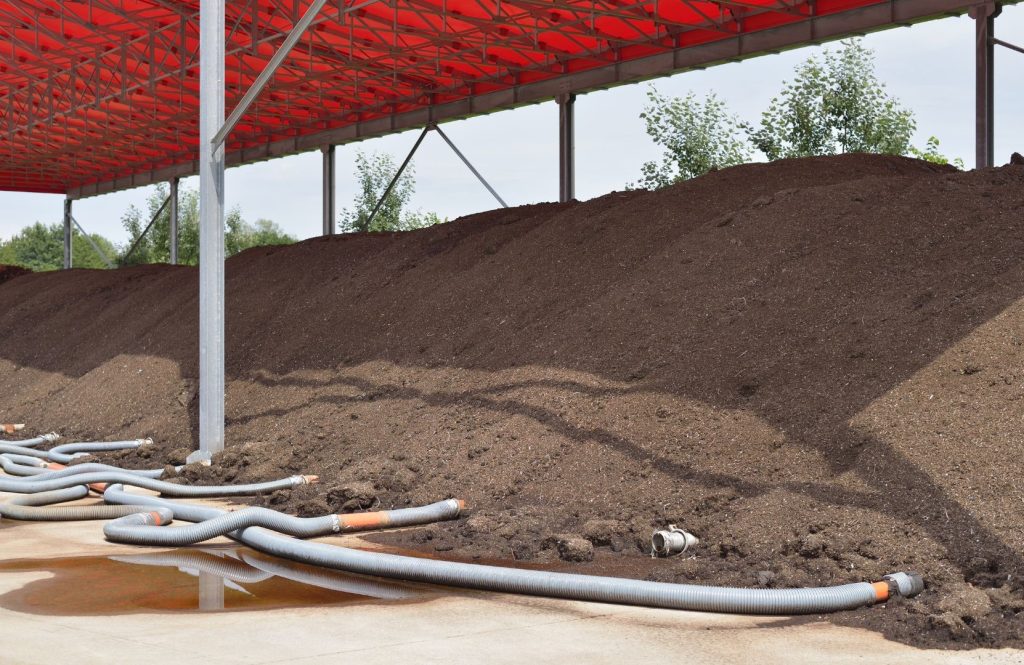The Ultimate Guide to Industrial Composting
The process of Industrial composting
Alright, fellow compost enthusiasts, let’s unravel the magic behind industrial composting! Picture this: a controlled symphony of microorganisms, oxygen, moisture, and temperature working together to turn organic materials into nutrient-rich compost on an industrial scale.
So, here’s the lowdown: Industrial composting isn’t your grandma’s backyard compost pile. Instead of relying on nature to take its sweet time, industrial composting puts on a show with specialized equipment and meticulous conditions, ensuring that the decomposition process is not just efficient but also top-notch.
Microorganisms are the unsung heroes. They are the tiny powerhouses breaking down organic waste into a composting masterpiece. But wait, there’s more! Oxygen plays a crucial role in creating an aerobic environment that fosters the growth of these compost-loving microbes.
And don’t forget about moisture – the secret sauce that keeps everything just right. Too dry, and the party slows down; too wet, and things get soggy. Industrial composting is all about finding that Goldilocks zone to keep the microbial shindig going strong. Temperature?
Oh, it’s a big deal. The right temperature levels speed up the process, ensuring we get that beautiful compost in record time.
Key components of Industrial composting facilities
Industrial composting facilities typically consist of several key components, including:
- Reception area: Where organic waste is received and sorted before processing.
- Processing equipment: For example, shredders, mixers, and conveyors are used to prepare the waste for composting.
- Composting vessels: Where the waste is placed to undergo decomposition, often in large piles or enclosed containers.
- Monitoring systems: To track temperature, moisture levels, and other factors critical to the composting process.
- Curing area: Where the compost is left to mature and become more stable before use or sale.
Environmental benefits of Industrial composting
Industrial composting offers numerous environmental benefits, including:
- Exploiting organic waste and Reducing greenhouse gas emissions: Reducing organic waste sent to landfills, where it would otherwise contribute to greenhouse gas emissions and leachate production.
- Soil enrichment – Reduce the need for chemical fertilizers: It can provide a nutrient-rich soil amendment that improves soil structure, fertility, and water retention. Compost can replace or supplement synthetic fertilizers, reducing reliance on fossil fuel-based inputs and minimizing nutrient runoff into waterways.
Practical applications of Industrial compost
Industrial compost has a wide range of practical applications across various industries, including:
- Agriculture: As a soil conditioner, mulch, or growing medium for crops, trees, and landscaping.
- Landscaping and horticulture: For improving soil health, suppressing weeds, and enhancing plant growth in gardens, parks, and green spaces.
- Erosion control: To stabilize slopes, prevent soil erosion, and promote revegetation in disturbed areas.
- Stormwater management: Incorporating compost into stormwater management practices to improve infiltration, filtration, and pollutant removal.
- Land reclamation: Restoring degraded lands, such as mine sites or brownfields, by amending soil with compost to support vegetation establishment.
Which materials can be composted?
When we talk about something being compostable, it means that the material has the fantastic ability to break down and transform into nutrient-rich compost in a composting environment.
Under the right conditions, involving the perfect blend of moisture, temperature, and aeration, these compostable materials contribute to the formation of stable humus. Humus is like the VIP section of the composting process – rich, dark, and nutrient-packed.
So, the next time you come across something labeled as compostable, know that it’s not just about disposal; it’s about closing the cycle and returning the organic matter back to the environment (soil).
Types of compostable materials
- Organic waste: This includes food scraps, yard trimmings, agricultural residues, and other biodegradable materials rich in carbon and nitrogen.
- Paper products: Certain paper-based materials, such as cardboard, newspaper, and uncoated paper, can be composted due to their biodegradable nature.
- Plant-based plastics: Compostable plastics derived from renewable sources, like cornstarch or sugarcane, can be composted under industrial composting conditions.
- Wood products: Untreated wood chips, sawdust, and wood shavings are compostable, adding carbon to the composting process.
- Textiles: Natural fibers like cotton, linen, and hemp can be composted, although synthetic fibers do not break down and should be avoided.
Factors Influencing the compostability of materials
- Biodegradability: Materials must be biodegradable, meaning microorganisms can break them down into simpler substances.
- Moisture content: Compostable materials should have adequate moisture content to support microbial activity and decomposition.
- Carbon-to-nitrogen ratio: A balanced carbon-to-nitrogen ratio in compostable materials ensures efficient decomposition and prevents nitrogen loss.
- Particle size: Smaller particle sizes facilitate faster decomposition by increasing the surface area available for microbial colonization.
- Presence of contaminants: Contaminants such as plastics, metals, and chemicals can hinder composting and should be removed from compostable materials.
How does Industrial composting work?
Industrial composting is a sophisticated process that efficiently transforms large volumes of organic waste into valuable compost. Here’s a detailed description of how industrial composting works:
Waste collection and sorting
The process begins with collecting organic waste from various sources such as households, restaurants, farms, and food processing facilities. This waste is then transported to the composting facility, where it undergoes sorting to remove contaminants such as plastics, metals, and non-compostable materials.

Shredding and pre-processing
Once sorted, the organic waste is shredded into smaller pieces to increase its surface area and facilitate microbial decomposition. This pre-processing step may also involve mixing different types of organic waste to achieve a balanced carbon-to-nitrogen ratio, which is crucial for efficient composting.
Piling or In-vessel composting
In industrial composting facilities, organic waste is typically composted using one of two methods: piling or in-vessel composting.
Piling method
In this method, shredded organic waste is piled into large windrows or heaps, often with the aid of specialized equipment such as compost turners. These piles are periodically turned to aerate the compost and ensure even decomposition.
In-vessel composting
Alternatively, organic waste can be composted in enclosed vessels or reactors. In-vessel composting offers greater control over environmental factors such as temperature, moisture, and airflow, allowing for faster and more efficient composting.
Microbial decomposition
During composting, naturally occurring microorganisms such as bacteria, fungi, and actinomycetes break down the organic waste into simpler compounds through a process known as aerobic decomposition. These microorganisms require oxygen, moisture, and a suitable carbon-to-nitrogen ratio to thrive and decompose organic matter effectively.
Temperature monitoring and control
Temperature plays a crucial role in industrial composting, as it influences the activity of microorganisms and the rate of decomposition. Composting piles or vessels are monitored closely to ensure that temperatures remain within the optimal range for microbial activity (usually between 120°F to 160°F or 49°C to 71°C). Temperature probes and sensors are used to monitor internal temperatures, and adjustments may be made by adding water, turning the compost, or adjusting airflow to regulate temperature.
Curing and maturation
Once the composting process is complete, the compost is allowed to cure and mature in a separate area of the facility. During this phase, any remaining organic matter continues to decompose, and the compost undergoes further stabilization. Curing typically lasts several weeks to several months, depending on the desired quality of the final compost product.
Screening and quality control
Before being used or sold, the finished compost undergoes screening to remove any remaining large particles, contaminants, or foreign objects. Quality control measures are implemented to ensure that the compost meets established standards for moisture content, nutrient levels, and maturity.
Distribution and utilization
Finally, the finished compost is ready for distribution and utilization. It can be sold to farmers, landscapers, gardeners, municipalities, and other end-users for various applications such as soil amendment, landscaping, erosion control, and agriculture.
Overall, industrial composting is a highly controlled and efficient process that harnesses the natural decomposition abilities of microorganisms to convert organic waste into a valuable resource, contributing to environmental sustainability and resource conservation.

Common Problems that Can Occur During Composting
Composting is not without its challenges. We’ll explore some common problems that can occur during composting and provide solutions to help you overcome them.
- Odor Issues
One of the most common complaints in composting is unpleasant odors emanating from the compost pile. This can occur due to anaerobic conditions, excessive moisture, or the presence of nitrogen-rich materials such as food scraps. To address odor issues, ensure proper aeration by turning the compost regularly and maintaining a balanced carbon-to-nitrogen ratio. Additionally, cover the compost pile to prevent excessive moisture buildup and minimize odor.
- Slow Decomposition
Slow decomposition can be frustrating for composters, leading to delays in producing usable compost. Several factors can contribute to slow decomposition, including inadequate aeration, low temperatures, and imbalanced carbon-to-nitrogen ratios.
To speed up decomposition, ensure proper aeration by turning the compost regularly and provide optimal conditions for microbial activity by maintaining moisture levels and balancing carbon and nitrogen inputs.
- Pests and Rodents
Pests and rodents are attracted to compost piles that contain food scraps or other organic materials. To deter pests, avoid composting meat, dairy, or oily foods, which can attract unwanted visitors. Additionally, consider using a rodent-proof compost bin or adding a layer of wire mesh at the bottom of the compost pile to prevent pests from burrowing into the compost.
- Excessive Moisture
Excessive moisture in the compost pile can lead to anaerobic conditions, foul odors, and slow decomposition.
To address excessive moisture, ensure proper drainage by placing the compost pile on a well-drained surface or adding bulking agents such as straw or wood chips to improve aeration and absorb excess moisture. Covering the compost pile during rainy periods can also help prevent waterlogging.
- Weed Seeds and Pathogens
Compost piles that do not reach sufficient temperatures during the composting process may fail to kill weed seeds and pathogens, leading to weed growth and potential disease transmission in the garden.
To reduce the risk of weed seeds and pathogens in compost, maintain proper temperatures by ensuring adequate pile size, moisture, and aeration. Additionally, avoid composting diseased plant material or weeds that have gone to seed.
- Unpleasant Appearance
Compost that is not properly managed may appear unsightly, with visible layers of undecomposed materials or mold growth on the surface. To improve the appearance of compost, ensure proper aeration, moisture levels, and balance of carbon and nitrogen inputs. Turning the compost regularly and shredding bulky materials can help facilitate decomposition and create a more uniform, aesthetically pleasing compost.
And there you have it – a comprehensive journey into the heart of industrial composting. From unraveling the secrets of microbial symphonies to witnessing the metamorphosis of organic waste into nutrient-rich compost, this guide has illuminated the path toward a greener, more sustainable future. Armed with this newfound understanding, you’re not just a bystander; you’re a key player in the world of waste management. So, roll up your sleeves, embrace the composting revolution, and let’s collectively cultivate a healthier planet, one compost pile at a time.
Further reading:
Food Waste – A Valuable Resource in the Circular Economy
Promoting Sustainable Agriculture and Food Waste Reduction for a Greener Tomorrow
From Field to Fork: Strategies for Reducing Food Waste
Sustainable Use of Bagasse: Harnessing the Potential of Sugarcane Waste
A Sustainable and Safe Solution for Managing Swine Waste













































































